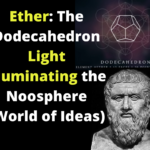Page 149
whole establishing an unquestionable identity of origin between the Christian inspired Book, and the heathen “fables” of Scandinavia and Hindustan. The traditions of nearly every other nation, if examined, will yield a like result.
What modern cosmogonist could compress within so simple a symbol as the Egyptian serpent in a circle such a world of meaning? Here we have, in this creature, the whole philosophy of the universe: matter vivified by spirit, and the two conjointly evolving out of chaos (Force) everything that was to be. To signify that the elements are fast bound in this cosmic matter, which the serpent symbolizes, the Egyptians tied its tail into a knot.
There is one more important emblem connected with the sloughing of the serpent’s skin, which, so far as we are aware, has never been heretofore noticed by our symbolists.
As the reptile upon casting his coat becomes freed from a casing of gross matter, which cramped a body grown too large for it, and resumes its existence with renewed activity, so man, by casting off the gross material body, enters upon the next stage of his existence with enlarged powers and quickened vitality. Inversely, the Chaldean Kabalists tell us that primeval man, who, contrary to the Darwinian theory was purer, wiser, and far more spiritual, as shown by the myths of the Scandinavian Bur, the Hindu Dejotas, and the Mosaic “sons of God,” — in short, of a far higher nature than the man of the present Adamic race, became despiritualized or tainted with matter, and then, for the first time, was given the fleshly body, which is typified in Genesis in that profoundly-significant verse: “Unto Adam also and to his wife did the Lord God make coats of skin, and clothed them.” Unless the commentators would make of the First Cause a celestial tailor, what else can the apparently absurd words mean, but that the spiritual man had reached, through the progress of involution, to that point where matter, predominating over and conquering spirit, had transformed him into the physical man, or the second Adam, of the second chapter of Genesis?
This kabalistical doctrine is much more elaborated in the Book of Jasher. In chapter vii., these garments of skin are taken by Noah into the ark, he having obtained them by inheritance from Methuselah and Enoch, who had them from Adam and his wife. Ham steals them from
Page 150
his father Noah; gives them “in secret” to Cush, who conceals them from his sons and brothers, and passes them to Nimrod.
While some Kabalists, and even archeologists say that “Adam, Enoch, and Noah might, in outward appearance, be different men, but they were really the selfsame divine person.” Others explain that between Adam and Noah there intervened several cycles. That is to say, that every one of the antediluvian patriarchs stood as the representative of a race which had its place in a succession of cycles; and each of which races was less spiritual than its predecessor. Thus Noah, though a good man, could not have borne comparison with his ancestor, Enoch, who “walked with God and did not die.” Hence the allegorical interpretation which makes Noah have this coat of skin by inheritance from the second Adam and Enoch, but not wear it himself, for if otherwise, Ham could not have stolen it. But Noah and his children bridged the flood; and while the former belonged to the old and still spiritual antediluvian generation, insomuch as he was selected from all mankind for his purity, his children were post-diluvian. The coat of skin worn by Cush “in secret,” — i.e., when his spiritual nature began to be tainted by the material — is placed on Nimrod, the most powerful and strongest of physical men on this side of the flood — the last remnant of the antediluvian giants.
In the Scandinavian legend, Ymir, the giant, is slain by the sons of Bur, and the streams of blood flowing from his wounds were so copious that the flood drowned the whole race of ice and frost giants, and Bergelmir alone of that race was saved, with his wife, by taking refuge in a bark; which fact permitted him to transmit a new branch of giants from the old stock. But all the sons of Bur remained untouched by the flood.

Moe is the founder of GnosticWarrior.com. He is a father, husband, author, martial arts black belt, and an expert in Gnosticism, the occult, and esotericism.






